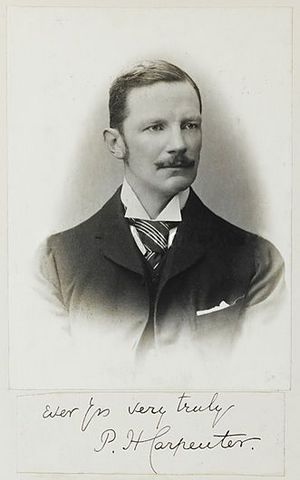Philip Herbert Carpenter facts for kids
Quick facts for kids
Philip Herbert Carpenter
|
|
|---|---|
 |
|
| Born | 6 February 1852 London, England
|
| Died | 21 October 1891 (aged 39) Eton College, England
|
| Alma mater |
|
| Occupation | naturalist and crinoid authority |
| Years active | 1874–1891 |
| Title |
|
| Parent(s) | William Benjamin Carpenter, Louisa Powell (1840–1885) |
| Relatives | Philip Pearsall Carpenter (uncle)) Russell Lant Carpenter (uncle) Mary Carpenter (Aunt) |
| Awards | Lyell Fund (1881) |
Philip Herbert Carpenter (6 February 1852 – 21 October 1891), FRS, British naturalist and crinoid authority, was the fourth son of William Benjamin Carpenter.
Education and research
Carpenter was educated at University College School, then at University College, and afterwards became a Scholar of Trinity College, Cambridge, where he graduated in 1874. He was a member of the scientific staff of the deep-sea exploring expeditions of H.M.S. Lightning (1868) and Porcupine (1869–1870). In 1875, he was appointed assistant naturalist to H.M.S. Valorous accompanying Admiral Sir George Strong Nares's Arctic expedition to Disco Island, and spent the summer sounding and dredging in Davis Strait and the North Atlantic.
Career
After the 1872–1876 HMS Challenger expedition had returned, he was asked in January 1878 by Sir Wyville Thomson to describe the free-swimming Crinoids that had been collected.
Carpenter was an expert on the morphology of the echinoderms, especially the crinoids, both contemporary and fossil. In 1883, he was awarded the Lyell Fund by the Geological Society of London in recognition of the scientific value of his work, and in 1885 was elected a Fellow of the Royal Society.
Personal life
On 19 April 1879, he married Caroline Emma Hale, daughter of Edward Hale, an assistant master at Eton, by whom he had five sons. Carpenter died at Eton College where he was Science Master in 1891 after self-administrating chloroform during a bout of temporary insanity caused by chronic insomnia.

